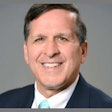U.S. dentists should be reimbursed by a "new system." Dental and medical records should be united in one electronic database. There should be a national licensure examination. And President Barack Obama should publicize his next dental visit.
These were some of the conclusions reached by the Access to Dental Care Summit organized by the ADA in March. The organization recently posted details of the proceedings on its Web site.
The three-day summit brought 144 representatives from state and national professional organizations, advocacy groups, federal agencies, industry, academics, financing organizations including third-party payers, philanthropies, safety net providers, nondental healthcare providers, dental volunteer leaders to ADA's Chicago headquarters to answer the question, "What are we going to do, in the short and the long term, both individually and collectively, to assure optimal oral health through prevention and treatment for underserved people?"
The summit kicked off with a presentation by Capt. Bruce Dye, D.D.S., M.P.H., dental officer for the U.S. Public Health Service, who argued that agreeing on a definition of adequate oral healthcare should be a first order of business.
During a further discussion of how dentistry got to where it is, and what forces could change it, various sectors within dentistry agreed to statements of accomplishments and regrets. For example, the ADA leadership was proud of its advocacy for the profession, citing the enhancement of dental benefits within the Children's Health Insurance Program.
It was proud of promoting science and evidence-based dentistry, as well as being a "credible organization."
Regrets included "being closed-minded and not effective listeners," "being reactive rather than proactive," and "being insular and not recognizing nondental groups."
Next, the participants divided into working groups around various issues. A Workforce Development group called for expansion of the dental workforce with "nationwide evaluation standards and regulations," including a national licensure examination.
A group on reorganizing the dental delivery system set among its goals "incentives to keep the treated population healthy."
The working group on financing came up with a target of "defining universal coverage and access as including a government program, an employer-based program, and self-pay, which differentiates this as not being a single-payer program."
Both the working groups on collaboration and reorganization called for electronic dental records that combine with electronic medical records.
The idea of asking President Obama to publicize his dental visit was intended to attract more attention to the importance of dental visits.
Copyright © 2009 DrBicuspid.com



















